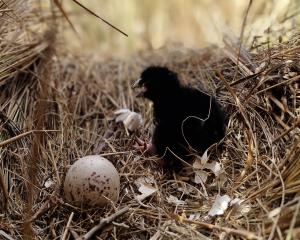The owner of a development near Lake Hayes is planning to spend about $3 million helping to save a rare skink.
Jim Boult, of Meadow 3, said while an ecological restoration of part of the property was a condition of the development consent "we decided to do more than just comply and to try to make a difference", particularly for the McCann's skink.
Threepwood had been farmed for more than 100 years, the effect of which was the loss in the high country of that variety of skink.
Although abundant in the Mackenzie Basin, the McCann's skink was becoming scarcer in Otago.
Mr Boult said his team was now busy instigating a "massive" green initiative, costing about $3 million, to help protect the reptile. The focus area was on the "mountain view side" of the subdivision, facing Coronet Peak, he said.
Part of the project was to plant 220,000 native plants including matagouri, manuka, kowhai, cabbage tree, toe toe, flax and tussock.
"One of the terms of the original consent, which dates back to 2004, was to do some planting of native flax and other species on that part of the development site. While there was a requirement to do something . . . we're going to do a bit more.
"When you've got custodianship over a piece of land that covers 200 hectares of ideal skink habitat, it occurs to you there's a chance to do something about it.
"Farming demands space and it made perfect economic sense for early agricultural pioneers to clear the land for grazing.
"The modern agricultural unit at Threepwood has ample space for good farming without interfering with anybody's way of life, so we're putting back native vegetation to further enhance the region."
Native plants had been sourced from "all over the show" and had been gradually planted over the past two years, he said.
"It's one of those things where you can't do all the planting in one year. It's better for the plants if it's spaced out over a number of years."
Mr Boult said there was one year left of the planting programme and he hoped to see an increase in the McCann's skink within the following two or three years.
Additionally, there were safety installations, including a "mammoth" fence to keep out ground-based predators from Threepwood's entire 40ha elevated section, The Downs.
"We're lucky that we already have a good-sized skink population at Threepwood, so what we have to do is protect them as best we can and perfect their habitat to encourage them to do what comes naturally."












